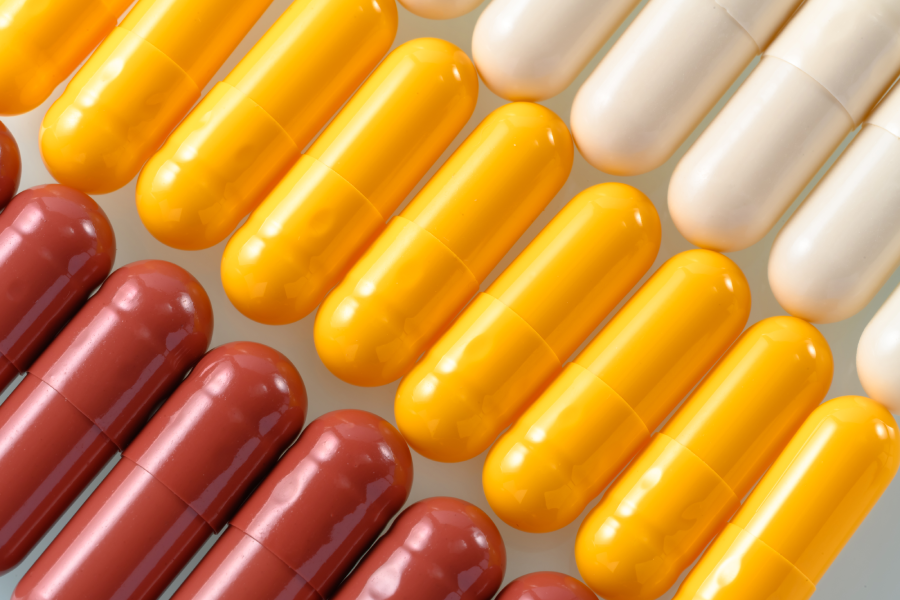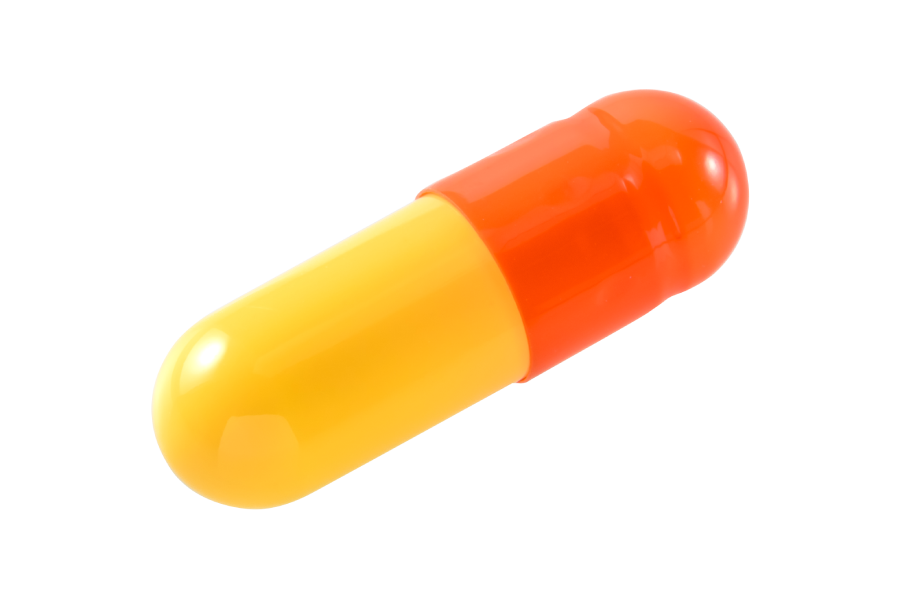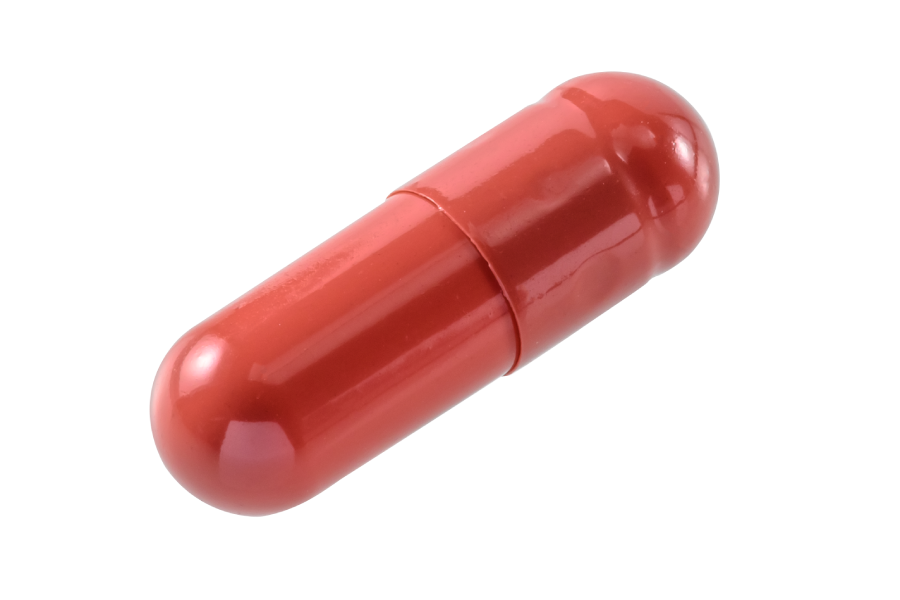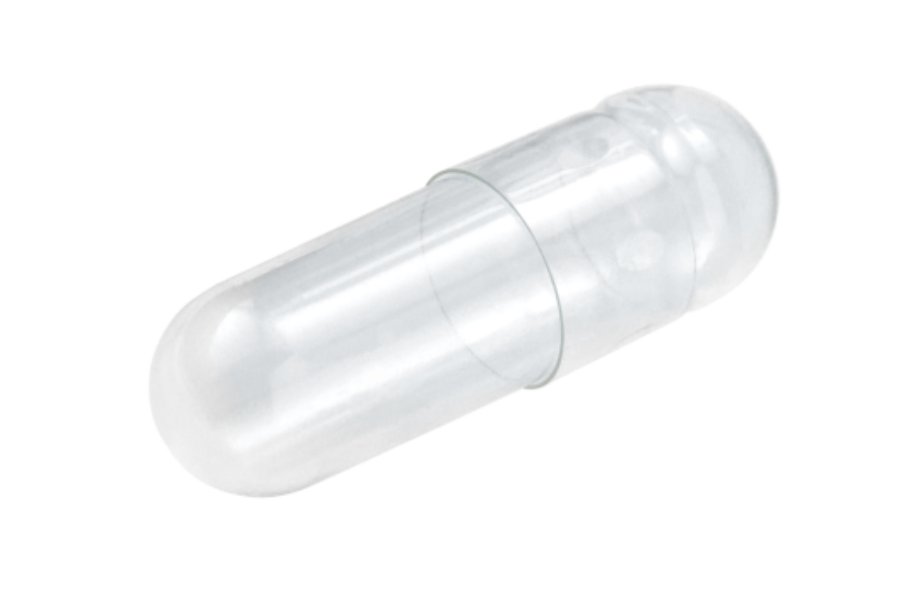Empty capsules are cylindrical and consist of a cap and body that fit and lock together, forming a hard yet elastic empty shell, widely used in the preparation of capsule formulations in the pharmaceutical and health product industries. Empty capsules are made from primary materials and auxiliary materials. The primary material for empty capsules is generally food-grade or pharmaceutical-grade high molecular weight film-forming materials, which contain a certain amount of moisture. When needed, based on different film material characteristics, different preparation processes, and user demands, a very small amount of food-grade or pharmaceutical-grade adjuvants, such as colorants, light blockers, plasticizers, and gelling agents, may be used.
As science and technology have advanced, the emergence of new materials and improvements in process technology levels have led to the development of empty capsules from originally just gelatin-based to now including hydroxypropyl methylcellulose (HPMC) capsules, hydroxypropyl starch capsules, and pullulan capsules. The corresponding main materials for these capsules are gelatin, hydroxypropyl methylcellulose, hydroxypropyl starch, and pullulan. Below, we introduce these four main materials in terms of their sourcing, regulatory compliance, and material properties to help you choose the right empty capsules.

Figure 1: Lefancaps® Empty Capsules
Gelatin
Gelatin is an animal-based material derived from partial acid, alkaline, or enzymatic hydrolysis of collagen found in animal skin, bones, tendons, and ligaments, or a mixture of these different types of gelatin. Gelatin does not exist freely in nature and cannot be extracted from the non-collagenous parts of vertebrates such as horns or hooves. Gelatin has no plant sources and no chemical relationship with other materials known as vegetable gels (such as seaweed extracts). Extracted from collagen, it contains a significant amount of cyclic amino acids, proline, and hydroxyproline. Collagen consists of three intertwined helical polypeptide chains connected by intermolecular cross-links.
Gelatin, CAS Reg. No. 9000-70-8, is recognized by the U.S. Food and Drug Administration (FDA) as Generally Recognized as Safe (GRAS) and is listed in the 2023 edition of the United States Pharmacopeia.
Gelatin has widespread applications in the pharmaceutical and food industries as a film-forming agent, gelling agent, suspending agent, adhesive, and thickener. Gelatin-based empty capsules are extensively used in pharmaceuticals and health food capsules due to their clear advantages.
Gelatin empty capsules need attention during storage due to their high moisture absorbency, which poses a risk of the capsules becoming brittle.
Due to the structural components of gelatin, during long-term storage of the capsules, gelatin can undergo cross-linking reactions with aldehydes formed by oxidation or present in the contents, leading to delayed gelatin dissolution and slower formulation release.

Figure 2: Gelatin Empty Capsule (Lefancaps® Gelatincaps)
Hydroxypropyl Methylcellulose (HPMC)
Hydroxypropyl methylcellulose is a plant-based semi-synthetic product made by partially methylating and hydroxypropylating cellulose. Its production involves treating cotton linter or wood pulp cellulose with caustic soda, followed by sequential etherification with chloromethane and epichlorohydrin, and then refining and milling the product.
Hydroxypropyl methylcellulose, CAS Reg. No. 9004-65-3, is recognized by the FDA as GRAS and is listed in the 2023 edition of the United States Pharmacopeia.
Hydroxypropyl methylcellulose has broad applications in the pharmaceutical and food industries as an adhesive, coating agent, controlled-release agent, dispersant, emulsifier, film-former, foaming agent, granulating aid, release enhancer, solvent, suspending agent, sustained-release agent, and thickener. In the market, empty capsules made from hydroxypropyl methylcellulose are generally known as vegetable capsules.
Hydroxypropyl methylcellulose empty capsules have better compatibility and stability with low-moisture, hygroscopic contents and do not exhibit cross-linking reactions like gelatin. However, further improvements are needed in the appearance and mechanical strength of the products.

Figure 3: HPMC Empty Capsule (H-caps®)
Hydroxypropyl Starch
Hydroxypropyl starch is a plant-based semi-synthetic product made by chemically hydroxypropylating modified starch. Its preparation method involves starch undergoing etherification reactions with epichlorohydrin under alkaline conditions, followed by refining and milling.
Hydroxypropyl starch, CAS Reg. No. 9049-76-7, is recognized by the FDA as GRAS and is listed in the 2023 edition of the United States Pharmacopeia.
Hydroxypropyl starch has broad applications in the pharmaceutical and food industries as a binder, disintegrant, emulsifier, thickener, and viscosity enhancer. Currently, starch capsules are marketed.
Hydroxypropyl starch empty capsules are rarely used in the current market, and their safety, functionality, and stability need further evaluation.

Figure 4: Hydroxypropyl Starch Empty Capsule
Pullulan
Pullulan is a natural water-soluble polysaccharide made from starch syrup by fermentation. It consists of maltotriose units (three glucose molecules connected by α-1,4 bonds) linked by α-1,6 glucosidic bonds.
Pullulan, CAS Reg. No. 9057-02-7, is recognized by the FDA as GRAS and is listed in the 2023 edition of the United States Pharmacopeia.
Pullulan is used in food and pharmaceuticals as a film-forming agent, adhesive, binder, and thickener. It is odorless, tasteless, and stable. Pullulan films have very low oxygen permeability, which helps protect the active and functional ingredients within the films from degradation. Pullulan produced under the conditions of the USDA’s National Organic Program (NOP) can be certified as an organic product.
Due to its excellent film-forming properties, pullulan can be used as a primary material for empty capsules, so there are also pullulan empty capsules produced from organic pullulan available on the market that can be certified as organic capsules.
Pullulan films, with their low oxygen transmission rate and lack of cross-linking reactions like gelatin, provide outstanding protection for both the contents and the stability of the capsule material itself. Pullulan polysaccharide empty capsules also appear more crystalline and have better mechanical strength.
From the current perspective, among the four types of empty capsules, pullulan is the best choice from a safety and natural standpoint. Organic pullulan capsules, used in the preparation of health product capsules, are also a very good choice.

Figure 5: Pullulan Empty Capsule (P-caps®)
We hope that this introduction to the four main materials currently available for empty capsules on the market will help you understand more about empty capsules and choose a product that you can be confident in.
-svg.png)